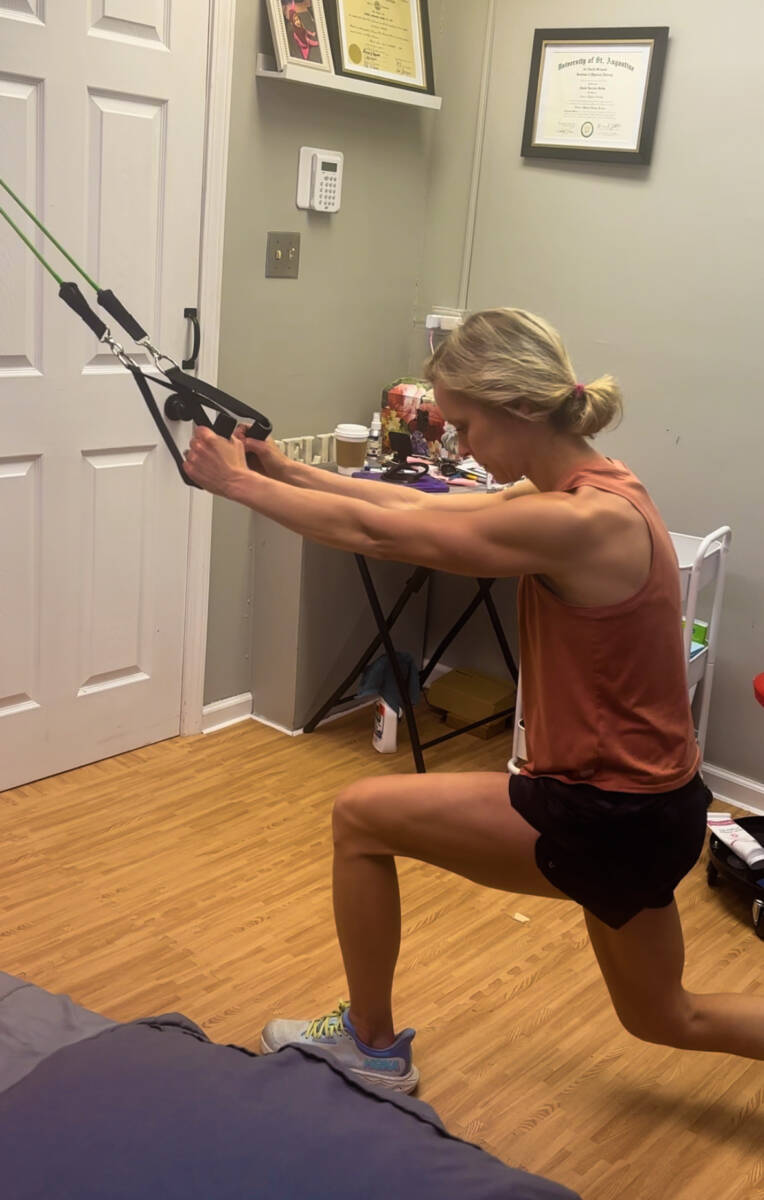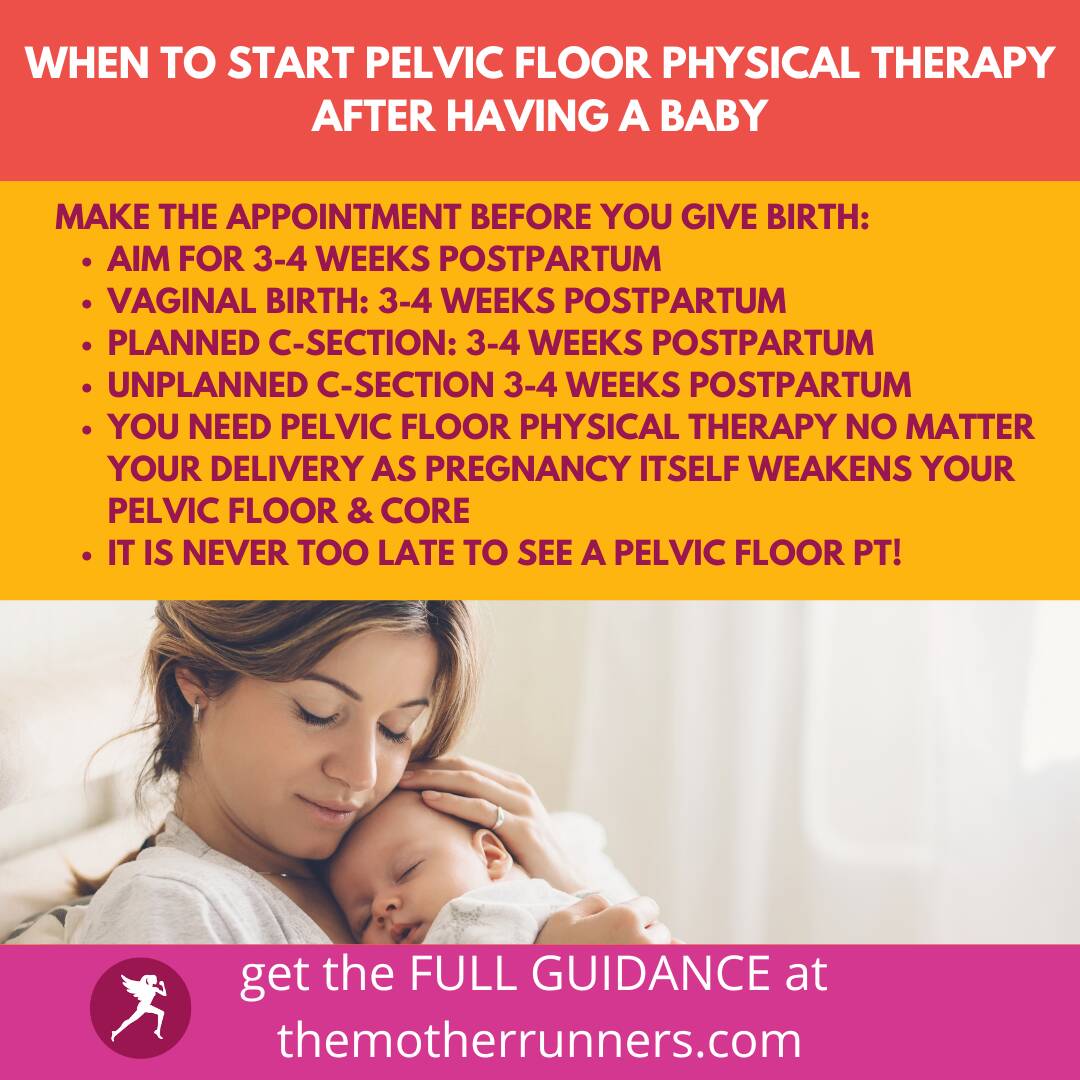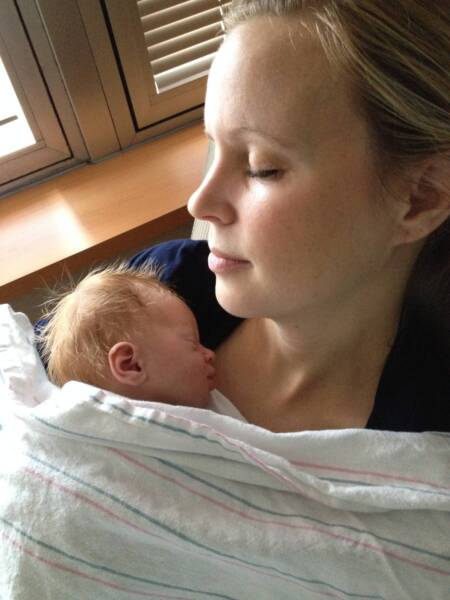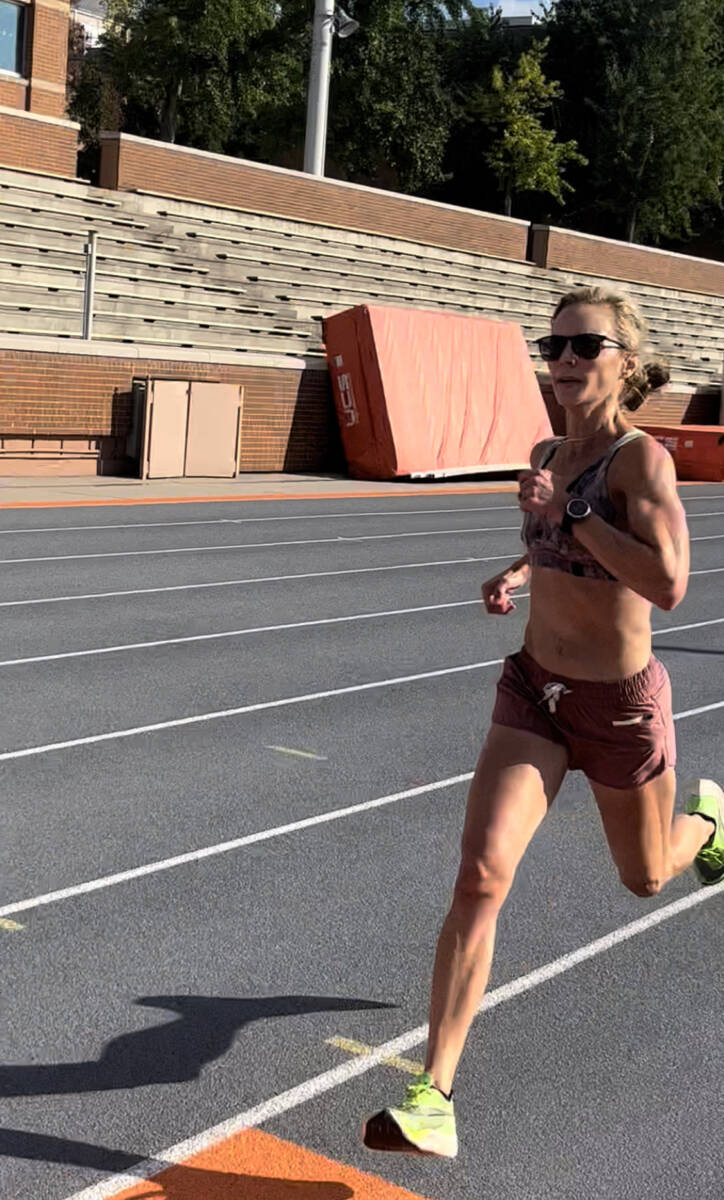When to Start Pelvic Floor Therapy After Birth
Every woman should see a pelvic floor physical therapist after birth. When to start pelvic floor physical therapy after birth? You can start 3-4 weeks after having a baby. Read on to learn why you do pelvic floor physical therapy postpartum and what to expect.

Seeing a pelvic floor physical therapist is one of the best things a postpartum woman can do for her health. Honestly, I learned this the hard way. After dealing with running injury after running injury after having my children, I finally decided to look under the hood and see a pelvic floor therapist.
I learned 7 years postpartum that I have diastasis recti (ab separation) which contributed to weak pelvic floor muscles on one side, hypertonic pelvic floor muscles on the other, poor core coordination, and therefore, a lack of stability when running.
Skip Ahead:
I worked with my pelvic floor physical therapist to strengthen and re-engage my core and pelvic floor so that my muscles were all pulling their weight and working efficiently.
Had I known to do pelvic floor physical therapy postpartum, I believe I would have sidestepped all my running injuries and been able to go after my running goals rather than be sidelined. (I could have an Olympic Trials Qualifying time for the marathon under my belt! But no sense living in the past…).
This is one reason why I urge all the athletes I coach to do postpartum pelvic floor physical therapy. It is a non-negotiable for me. Why? Because your pelvic floor experiences many changes during pregnancy and birth from hormonal changes that weaken your muscles, to the shifting of tissues and muscles to accommodate your growing baby, to the trauma of birth and/or c-section.
Below I will cover when to do postpartum pelvic floor therapy. Note, I am a running coach who works with postpartum runners. I am not a doctor or physical therapist, though I did consult with them to write this article.
Be sure to check out my COMPLETE postpartum running plan and FREE postpartum running plan here.

When to Start Pelvic Floor Therapy After Birth
Make an appointment as early as possible. Dr. Carrie Pagliano, doctor of physical therapy, suggests women make an appointment before giving birth for about 3 to 4 weeks postpartum. If you have already given birth—no matter how old your children are—you can see a pelvic floor therapist and get help!
It doesn’t matter if you have a vaginal birth or a caesarean section, either. There is always something to work on, says Pagliano. Even if you had a planned caesarean, pelvic floor muscles after c section are still weakened from the hormone relaxin and the bodily changes to make room for the baby,
“The only time that we would change this is if they’re significant medical complications with either the mom or the baby that obviously there are greater priorities that we would defer. Quite often it’s helpful in those scenarios to shift to a telehealth session because Mom doesn’t have to leave home and you can work with Mom in her natural environment,” she shares.
There are some insurance policies that will not allow you to see a pelvic floor PT until after 6 weeks postpartum. If this is the case, ask your insurance company if getting a doctor’s order will get you clearance.
6 Benefits of Pelvic Floor Therapy Postpartum
Studies show that a healthy pelvic floor can lead to a better overall quality of life! How? Because a healthy pelvic floor allows you to do all you want to do! Your pelvic floor holds the contents of your pelvis. When it doesn’t function correctly, you will experience issues such as low back pain, painful sex, leakage, and more.
Doing pelvic floor therapy postpartum can allow you to:
- Avoid surgeries for pelvic prolapse after childbirth
- Be able to play with your kids without worrying about leakage of urine, stool or gas
- Enjoy sex
- Go after your running goals without battling injuries or incontinence
- Avoid chronic low back pain, hip pain or pelvic pain
- Be empowered to live a healthy, active life
12 Signs that Therapy May Be Needed
The most common sign of pelvic floor dysfunction is incontinence or leaking urine “ANY incontinence is not normal!” says Hannah Poe, doctor of physical therapy.
Below are signs of a weak pelvic floor or pelvic floor dysfunction. If you experience any of these symptoms, you should see a pelvic floor specialist:
- Urinary or fecal incontinence (leaking)
- Pain with sex
- Pelvic pain
- Pelvic pressure or heaviness
- Constipation
- Tampons that dislodge or fall out
- Urinating more often
- Reduced sensation in the vagina
- Pain when urinating or when it’s full
- A strong urge to urinate but not being able to empty the bladder
- Pressure/bulging in the vagina
- Diastasis recti, or separation of the ab muscles (which often goes hand in hand with pelvic floor dysfunction).
You can find a pelvic floor physical therapist near you here.
5 Popular Pelvic Exercises After Giving Birth
So, what can you expect from pelvic floor physical therapy? I share in detail about my personal experience here. But in general, you will likely work on your breathing and do small intentional exercises that engage your pelvic floor muscles and core.
Below are some popular postpartum pelvic floor exercises:
Transverse Abdominal Breathing
- Lay on your back or sit comfortably in a chair
- Inhale slowly relaxing your stomach
- Exhale slowly as you pull your belly into your spine
- Repeat for 5-10 breaths to engage your core
- You can also do this in a cat cow position, pushing your limbs into the ground as you inhale.
Dead bug
- Lay on your back with your legs straight out in front of you and your arms at your side.
- Bend your knee to lift up your leg into a 90-degree angle.
- At the same time, lift the opposite arm so that it stretches straight overhead.
- Keep your abdominal muscles engaged.
- Switch arms and legs.
- Repeat for a total of 15 resp. Do 2-3 sets.
Small crunch
- Line on the floor with your knees bent in a tabletop position.
- Place one hand on your lower abs.
- Inhale and pull your belly to your spine, keeping your lowering abs flat, as you lift your head 3-4 inches. Keep your neck straight.
- Exhale as you slowly lower your head back to the ground.
- Repeat 30 times.
Bird dog
- Put your knees and hands on the ground.
- Inhale as you extend your right arm and your left leg. Hold for 1-2 seconds. Then return to kneeling position.
- Exhale as you alternate, extending your left arm and right leg.
- Aim to do 15 for 3 sets.
Bicycle
- Lie flat on your back with your knees up in a tabletop position. Interlace your hands behind your head with your elbows open wide.
- Twist your left elbow towards your right knee as you engage your abs and inhale.
- Exhale as you alternate elbows, reaching your left elbow to your right knee. Be careful not to pull on your neck. And fully extend your straight leg.
- Do 50 reps total.

How to Strengthen Your Pelvic Floor for Running
If you’re ready to start running postpartum, consider these exercises to improve your form and strengthen your postpartum running plan. These suggestions do not replace seeing a pelvic floor physical therapist. However, they can help you understand what to expect in your postpartum return to running.
Pair this with focusing on getting as much sleep/rest as possible and good nutrition!:
- Bicycle
- Plank and side planks
- Small crunch
- Bird dog
- Dead bug
- Single leg hop
- Skater hops
- Squat to single leg squat
- Bridge to single leg bridge
- Dead lift with bodyweight to weight
- Lunge
- Calf raises
- Kegel exercises postpartum
Is Pelvic Floor Therapy Worth It?
Hands down, pelvic floor therapy is worth it. Even if you aren’t experiencing any of the symptoms above, I view pelvic floor therapy as insurance against future issues or chronic pain.
I don’t think anyone has ever regretted taking the time to see a pelvic floor physical therapist. Worst case scenario, they say all looks good. If not, you are given the tools to feel and run your best!
Knowledge about the importance of pelvic floor physical therapy postpartum is just becoming more widespread. And much more is being learned as we speak. We can’t fault ourselves for not seeking the care we didn’t know we needed. But there is promise in knowing that it is never too late to address issues and be on your way to feeling your best.
If you’re ready to start running, I can help you get back to the roads safely—along with your pelvic floor PT!






